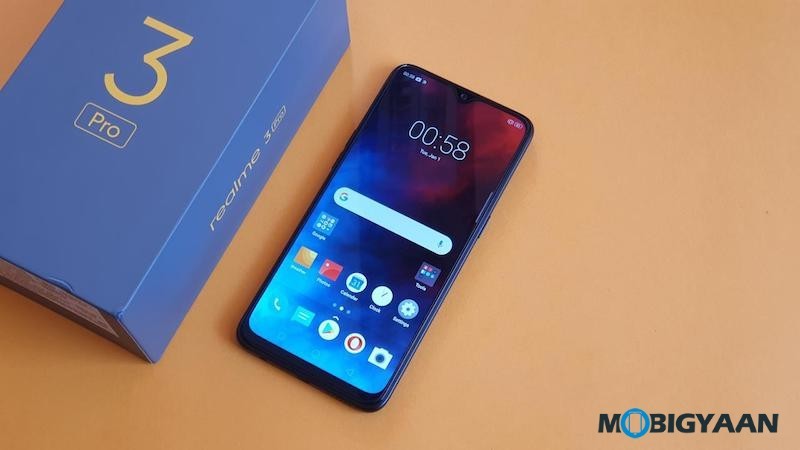After launching the Realme 3 smartphone, the company has now launched the Pro variant as well — the Realme 3 Pro. Given it’s specifications and the price point, the phone’s primary competitor is the Xiaomi Redmi Note 7 Pro, which is one of the best in this price range.
It’s clear that the Realme is aiming to take on the Redmi Note 7 Pro with the Realme 3 Pro, having similar pricing. So, let’s find out if the Realme 3 Pro has an edge over the popular Redmi Note 7 Pro or is it just another offering in the mid-range segment that falls short.
What’s in the box
- Realme 3 Pro
- micro USB cable
- 20W Charger
- TPU Case
- User Manuals and Warranty Card
- SIM tray ejector pin
Realme 3 Pro Specifications
- CPU: Qualcomm Snapdragon 710 octa-core processor
- GPU: Mali-G72 MP3 GPU
- RAM: 4/6 GB
- Operating System: ColorOS 6 based on Android 9 Pie
- Display: 6.3-inch Full HD+ dewdrop display with 2340 x 1080 pixels screen resolution, 19:9 aspect ratio, 408ppi pixel density, and Corning Gorilla Glass 5 protection
- Rear Camera: 16 MP (f/1.7) + 5 MP (f/2.4) with support for portrait mode, Nightscape, AI-based scene recognition, Chroma Boost, 960fps slo-mo video support, 64 MP Ultra HD Mode
- Front Camera: 25 MP with f/2.0 aperture
- Internal Storage: 64/128 GB
- External Storage: Yes, up to 256 GB
- Connectivity: Dual SIM, 4G VoLTE, Wi-Fi 802.11 b/g/n/ac, Bluetooth 5, GPS
- Other: Fingerprint Scanner, HyperBoost 2.0
- Colors: Carbon Grey, Nitro Blue, and Lightning Purple
- Battery: 4045 mAh with VOOC 3.0 20W fast charging support
Design and Build
The smartphone comes with a curved back panel, which bends towards the sides and blending in with the phone’s poly-carbonate frame. The smartphone comes with a subtle track-lines pattern on the back panel which is said to be inspired by a racetrack.
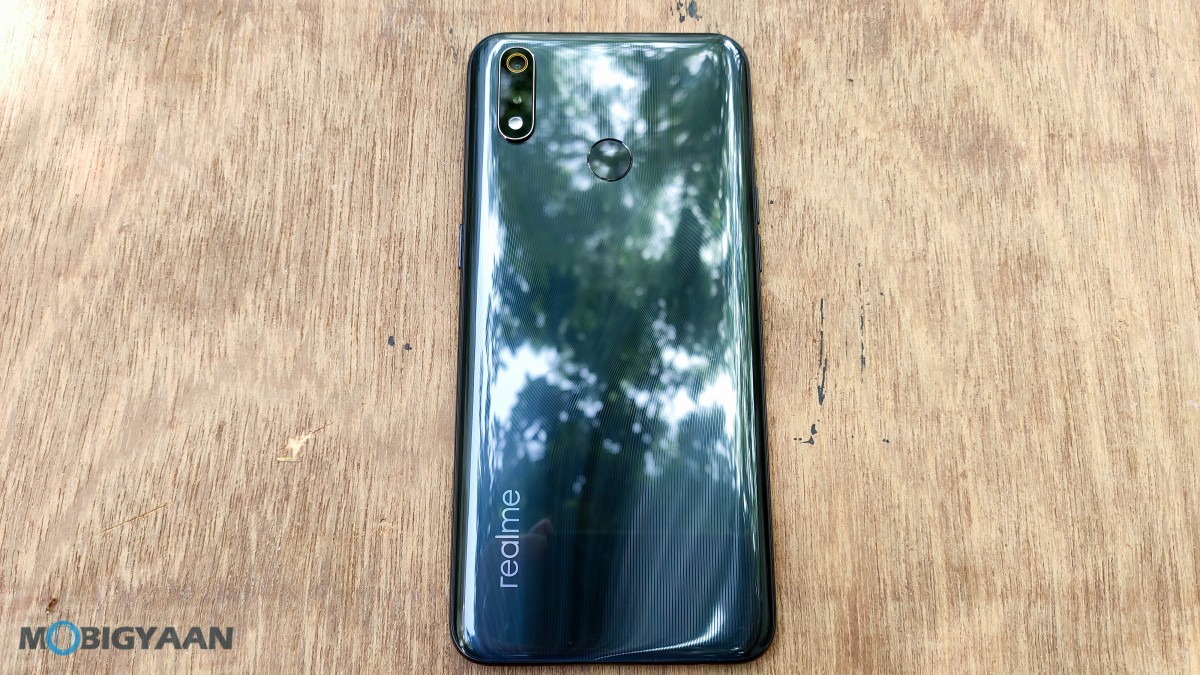
The smartphone comes in three color variants, which includes two gradient colors and one solid color. The two gradient colors are Nitro Blue and Lightning Purple and the solid color option is Carbon Grey. Our review unit has Carbon Grey color.
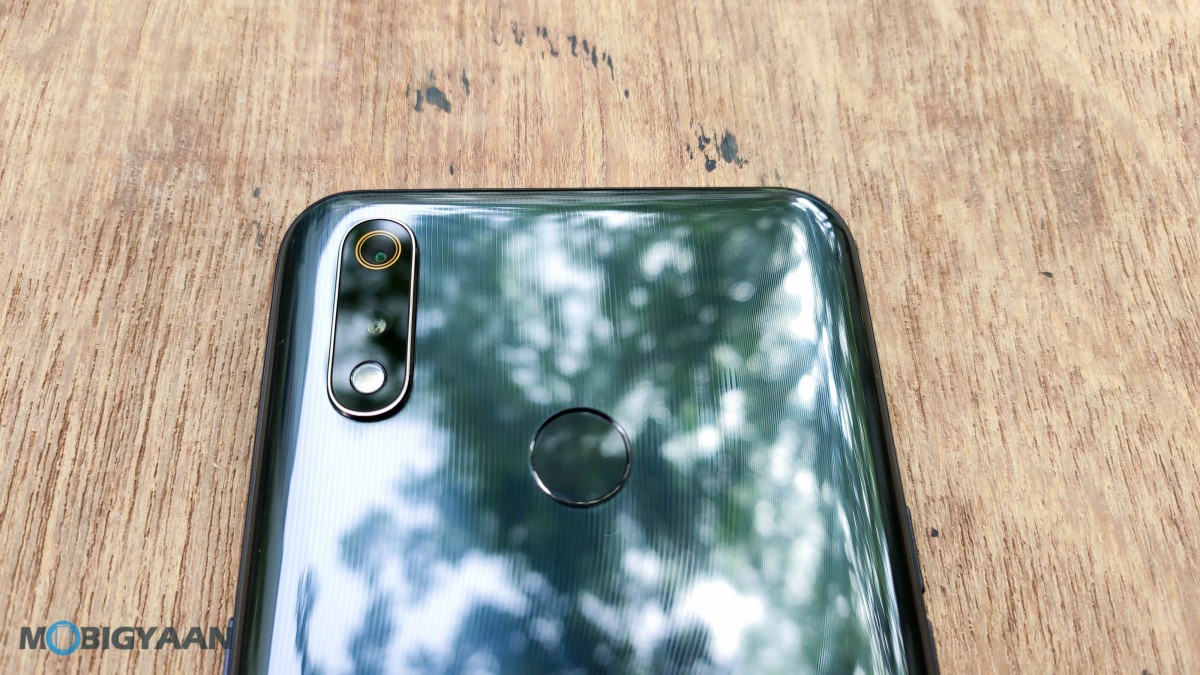
The device has a dual camera setup on the top-left corner on the back panel and a fingerprint sensor in the top-center position. Towards the bottom, there’s a Realme branding in the bottom-left corner.
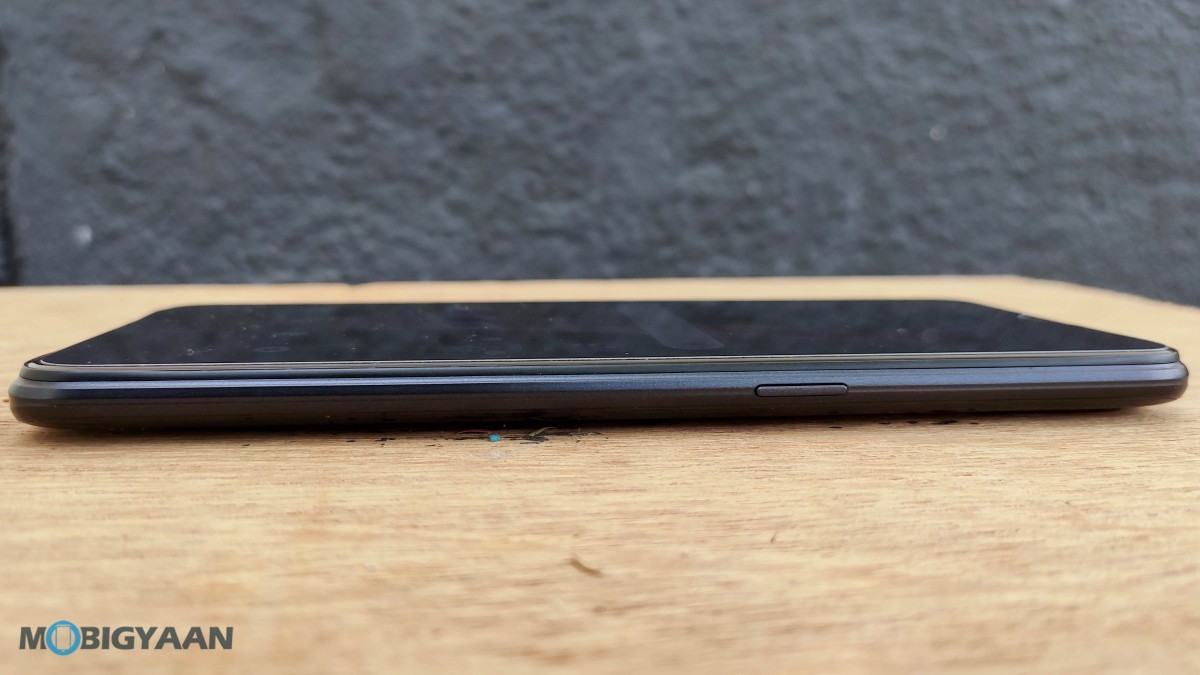
The power button is placed in the right side while the disjunct volume rocker keys are on the left side. There’s also a SIM card tray on the left side, which has a dedicated microSD card slot. At the bottom, there’s a speaker grille, micro USB port, 3.5mm headphone jack and a microphone.
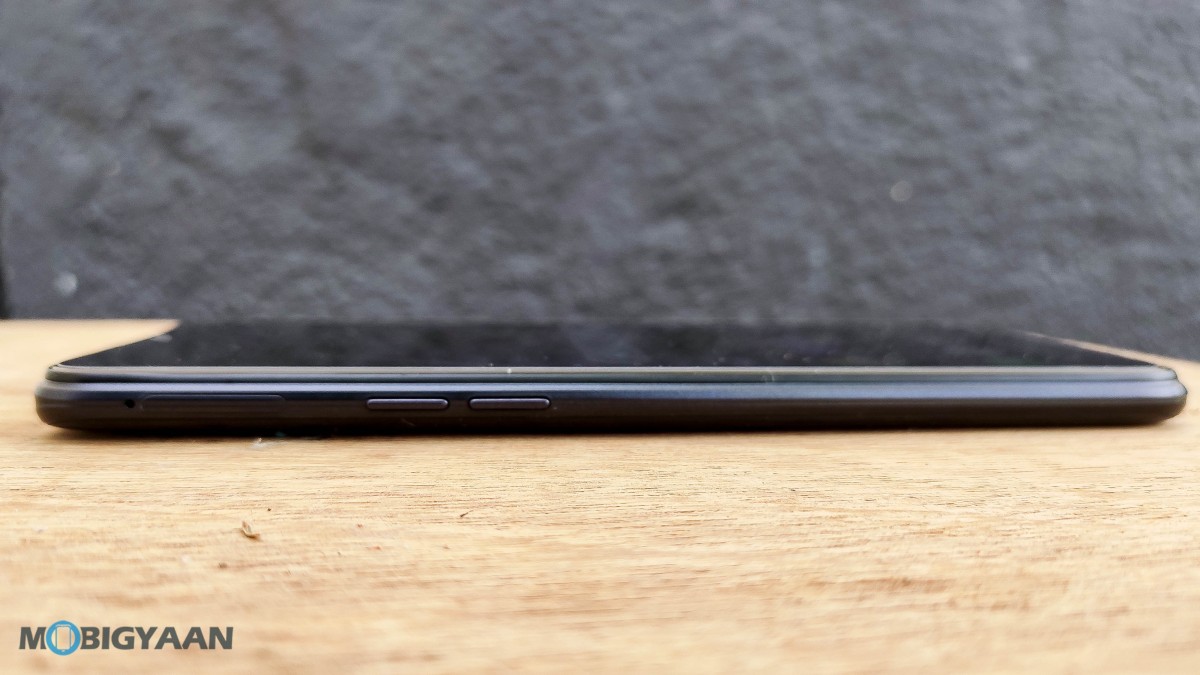
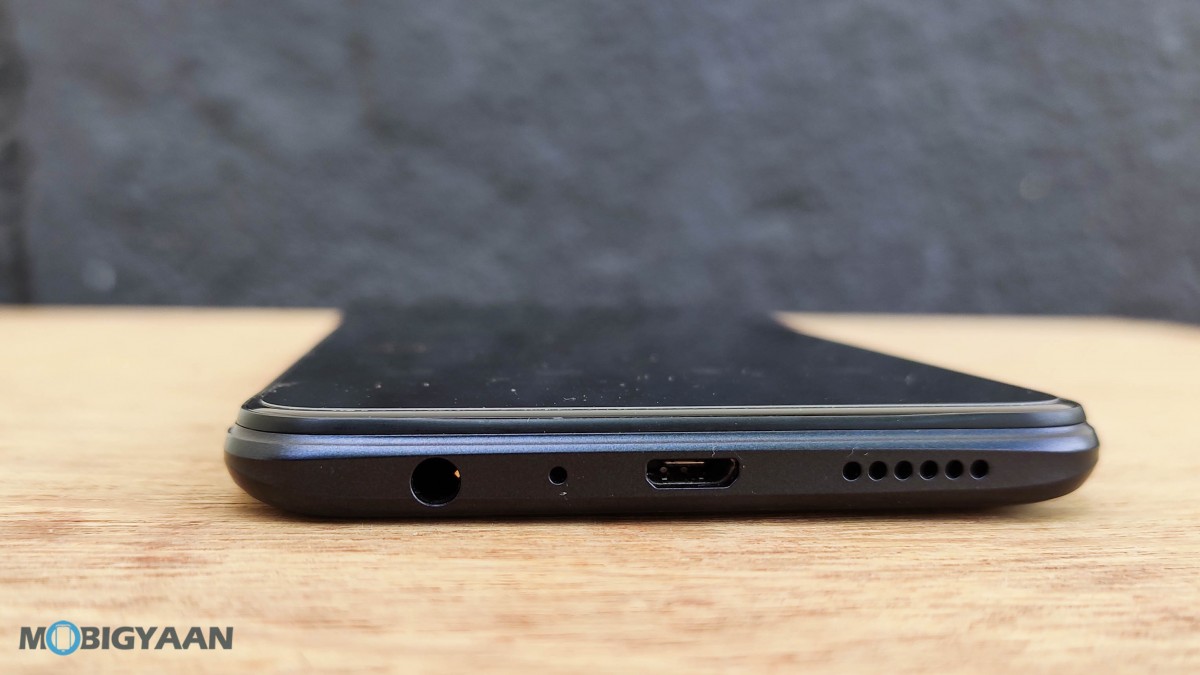
The device weighs about 172 grams and its dimensions are 156.8 mm x 74.2 mm x 8.3 mm. The phone feels light in the hand and doesn’t slip from the grip. As it comes with a glossy finish, the phone is a fingerprint magnet.
Display
The Realme 3 Pro comes with a 6.3-inch Full HD+ IPS LCD display with a waterdrop notch on top, offering 90.3 percent screen-to-body ratio. It is protected by a layer of Gorilla Glass 5 on top. The display is quite good and vibrant, offering good colour reproduction.
The display is one of the major upgrade compared to the Realme 3 which comes with HD+ display. It is also an improvement over the Realme 2 Pro’s display. However, it seems that the display is a bit towards warmer side, giving a slightly yellow tint.
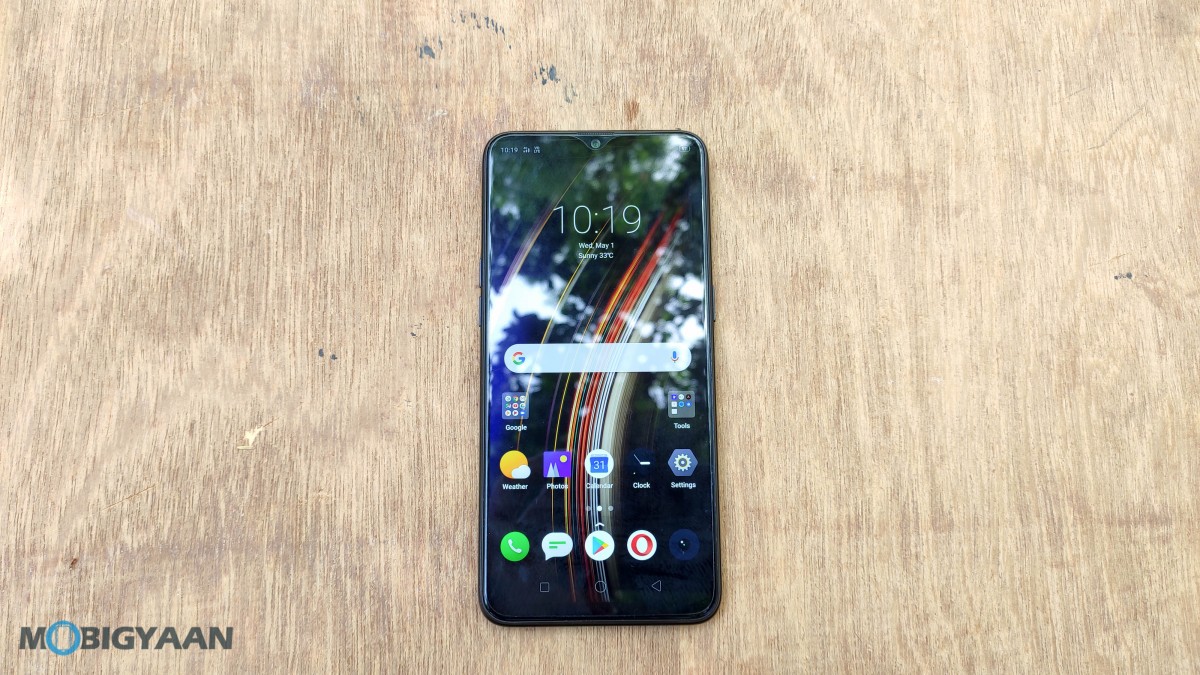
You can adjust the display color temperature through the Display settings. It offers a high pixel density of 408 pixels per inch, which is sharp enough. Also, it is fairly bright and offers good readability in indoor as well as outdoor scenarios.
Performance
The Realme 3 Pro is powered by the Qualcomm Snapdragon 710 octa-core processor. This is the first time this chipset is being offered at this price point. The SD710 is powerful than the Snapdragon 675 which powers the Xiaomi Redmi Note 7 Pro.
The chipset is manufactured using the 10nm node and comes with third-generation Kryo 360 cores. While the performance of both the chipset is nearly same, the SD710 scores point when it comes to graphics. It comes with Adreno 616 GPU which has more memory compared to the Adreno 612 on SD675. Also, the SD710 on Realme 3 Pro is compatible with Fortnite, which is not the case with the Redmi Note 7 Pro.
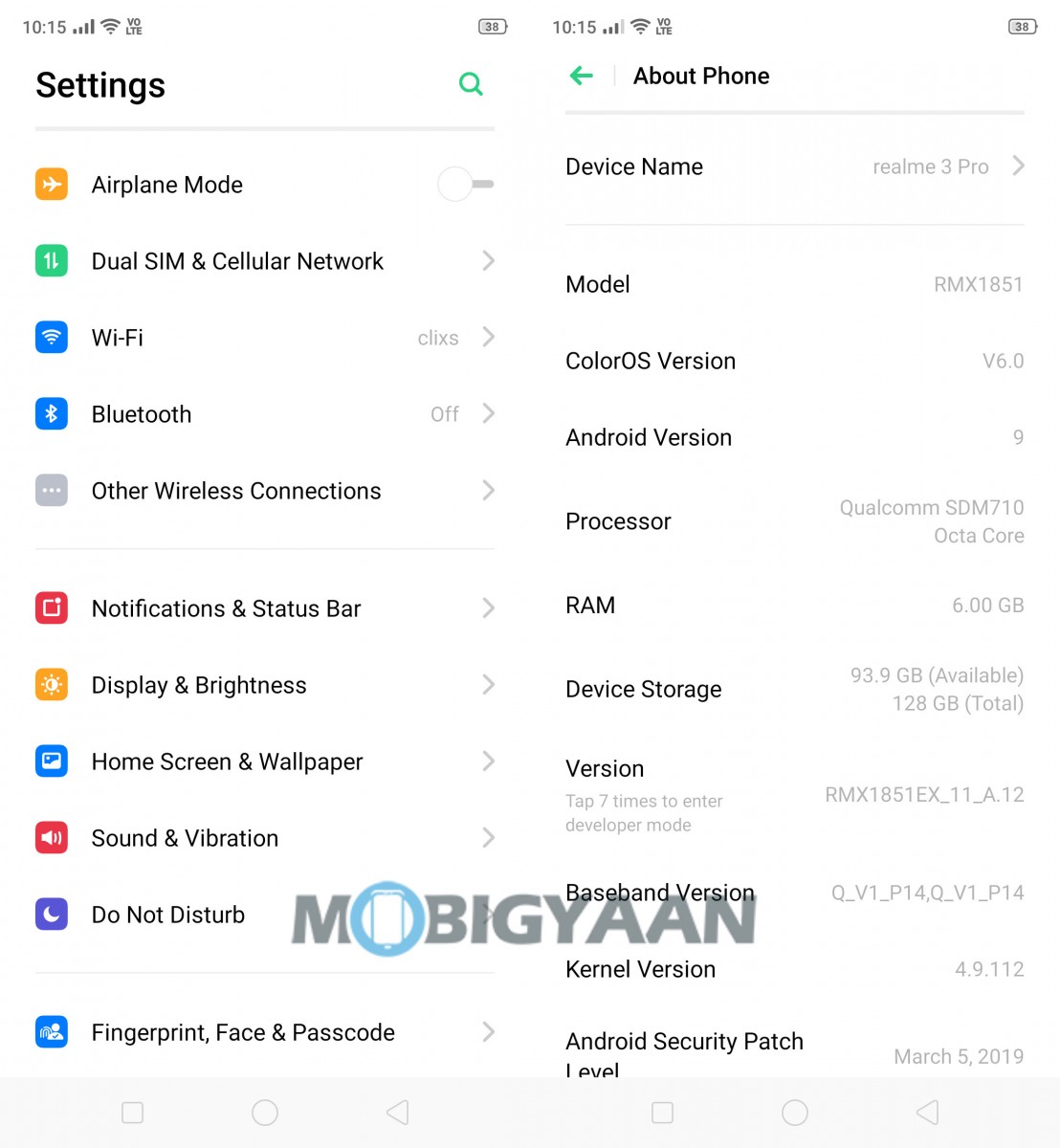
This is a pretty big deal that the Realme 3 Pro supports Fortnite at this price point. The game loads at medium quality as default and runs smoothly. It also performed very well while playing PUBG, which is what most users care about in India.
The smartphone comes in three variants based on the memory configuration — 4 GB RAM + 64 GB storage, 6 GB RAM + 64 GB storage, and 6 GB RAM + 128 GB storage. The unit we got for this review is the top-end 6 GB RAM + 128 GB internal storage model.
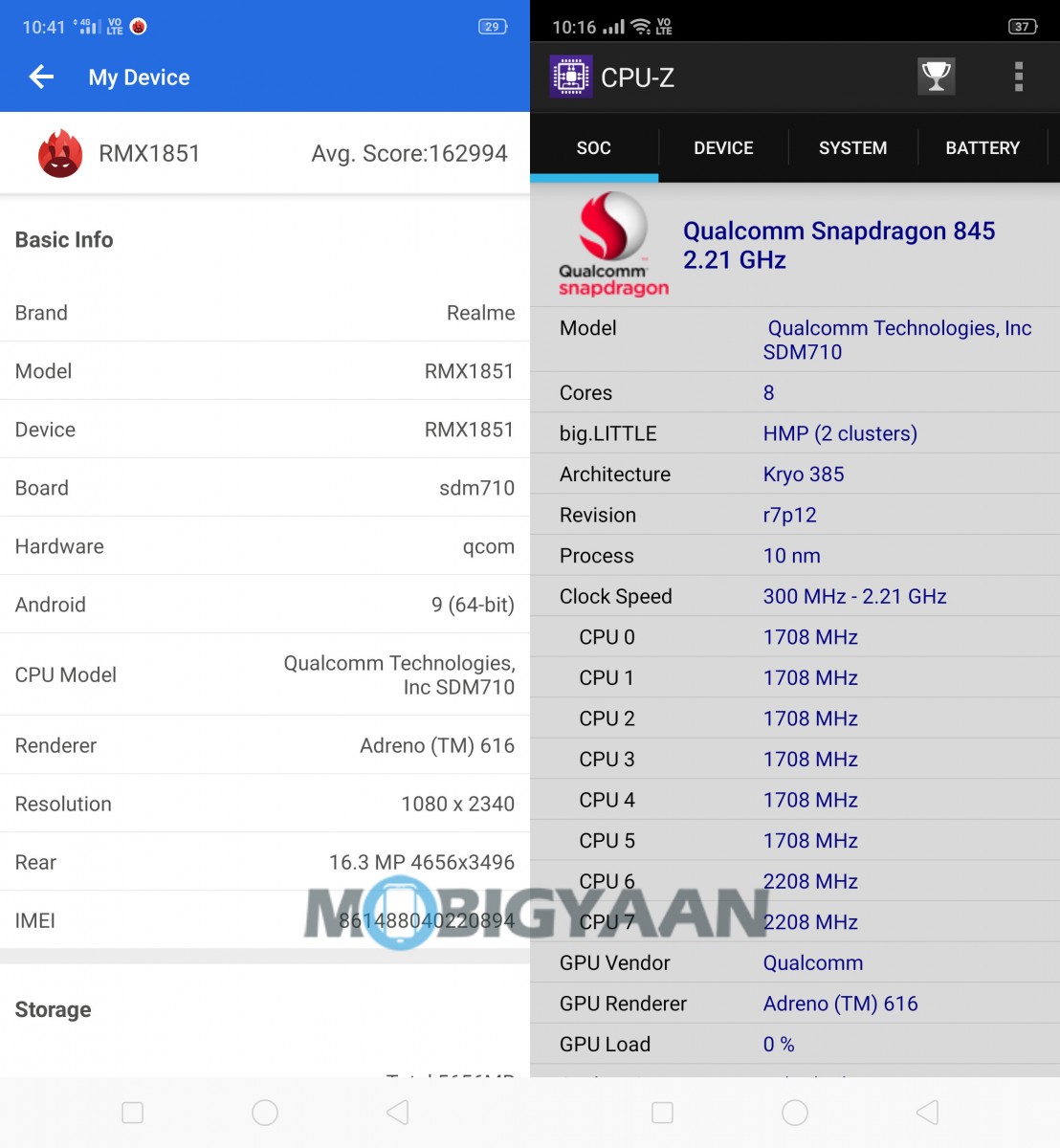
As for the normal real-world usage, there were zero issues with the smartphone. Thanks to its hardware, the Realme 3 Pro is among the fastest smartphone in its price segment. We didn’t experience any lags or slowdown during our usage.
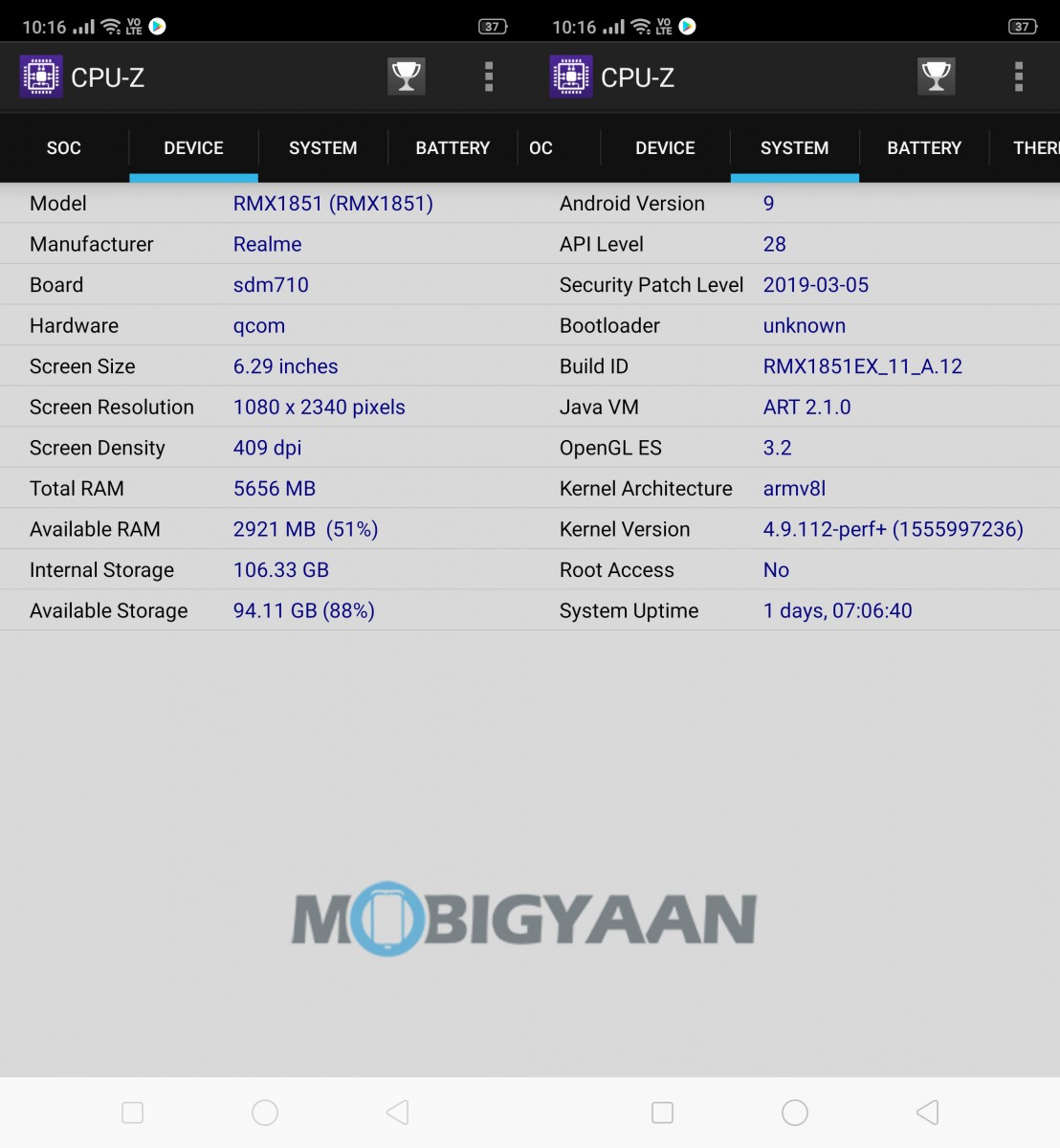
In the Geekbench benchmarking portal, the Realme 3 Pro scored 1,439 points in the single-core test and 5,932 points in the multi-core test. In comparison with the Xiaomi Redmi Note 7 Pro, this is quite low given that it scored 2,382 points in the score-core test. However, there’s no much difference in the mult-core scores as Redmi Note 7 Pro has 6,027 points.
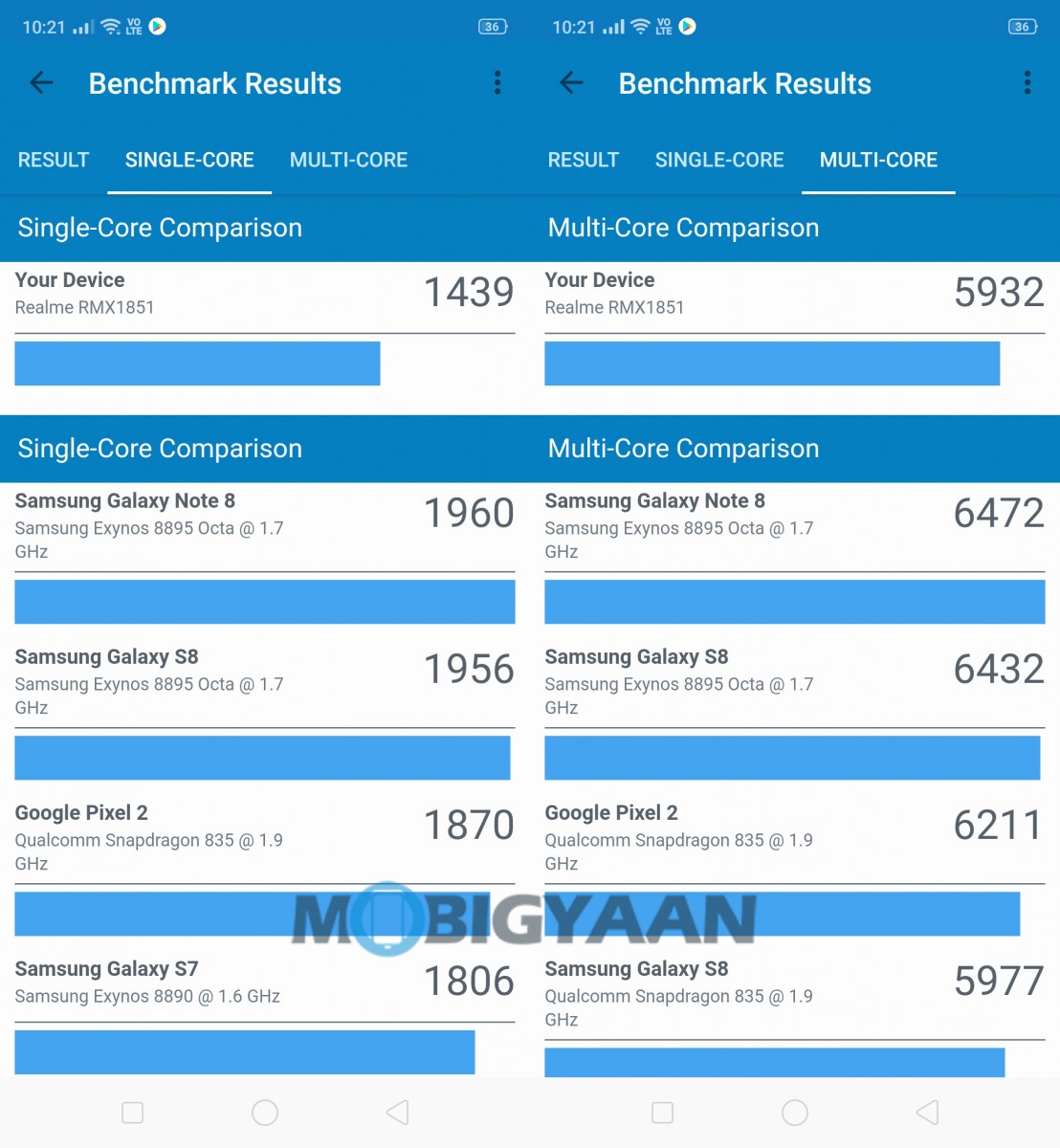
Software
The smartphone runs on Oppo’s ColorOS 6.0 custom user interface, which is based on Android 9 Pie operating system. While I was never a fan of ColorOS, the improvements that the company made with the ColorOS 6.0 is quite impressive.
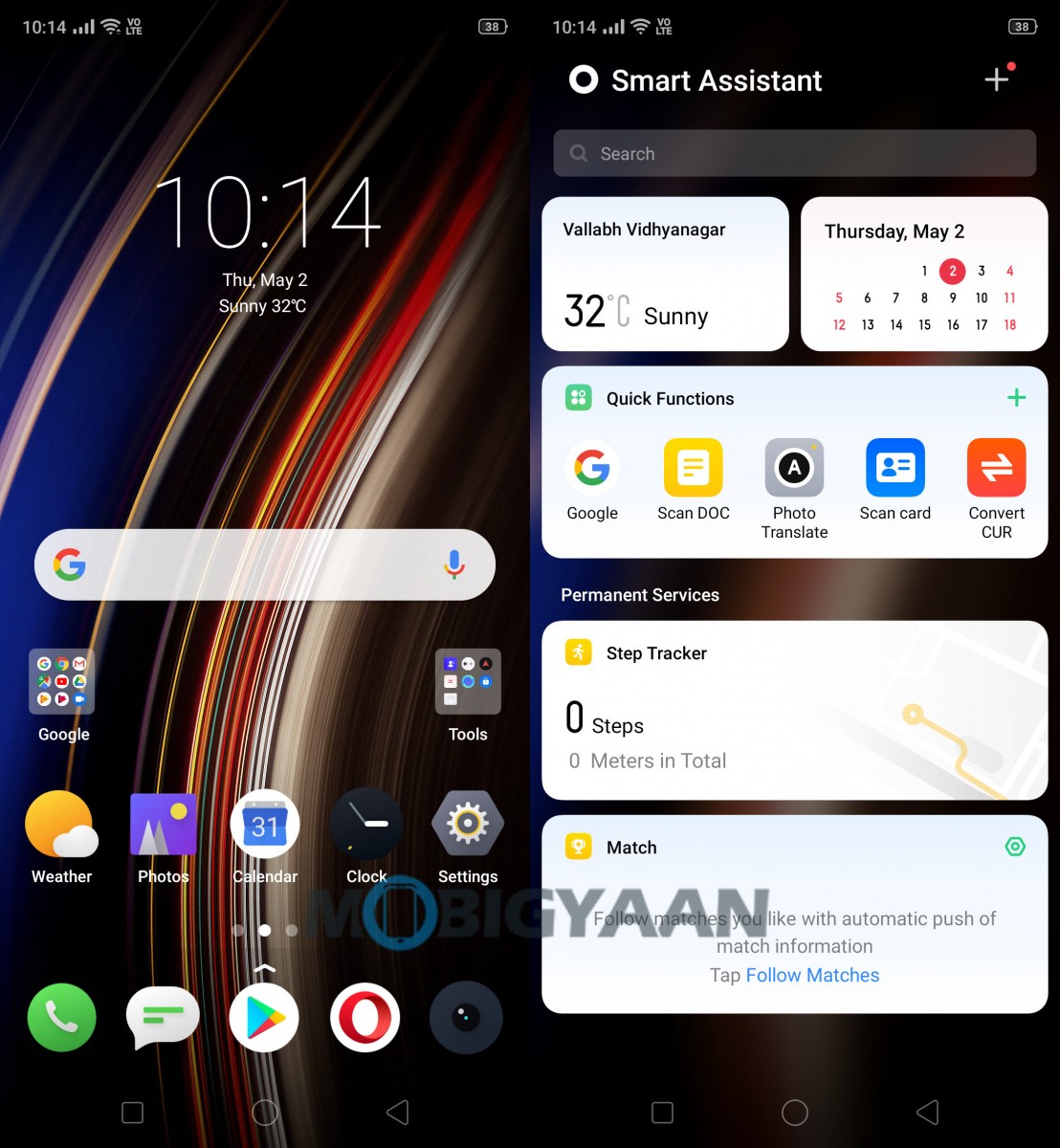
For the first time, it comes with an app drawer, which I prefer. The icons are now better and the drop-down settings from the top bar features much bigger icons and is quite easy to use. Overall, the interface is quite clean and simple.
The phone comes with a few pre-installed apps but you can uninstall most of the bloatware from the device. It also offers a fair amount of customizability. You can adjust the navigation gestures as well as screen-off actions. There’s also support for dual apps, driving mode and a riding mode for two-wheelers, and more.
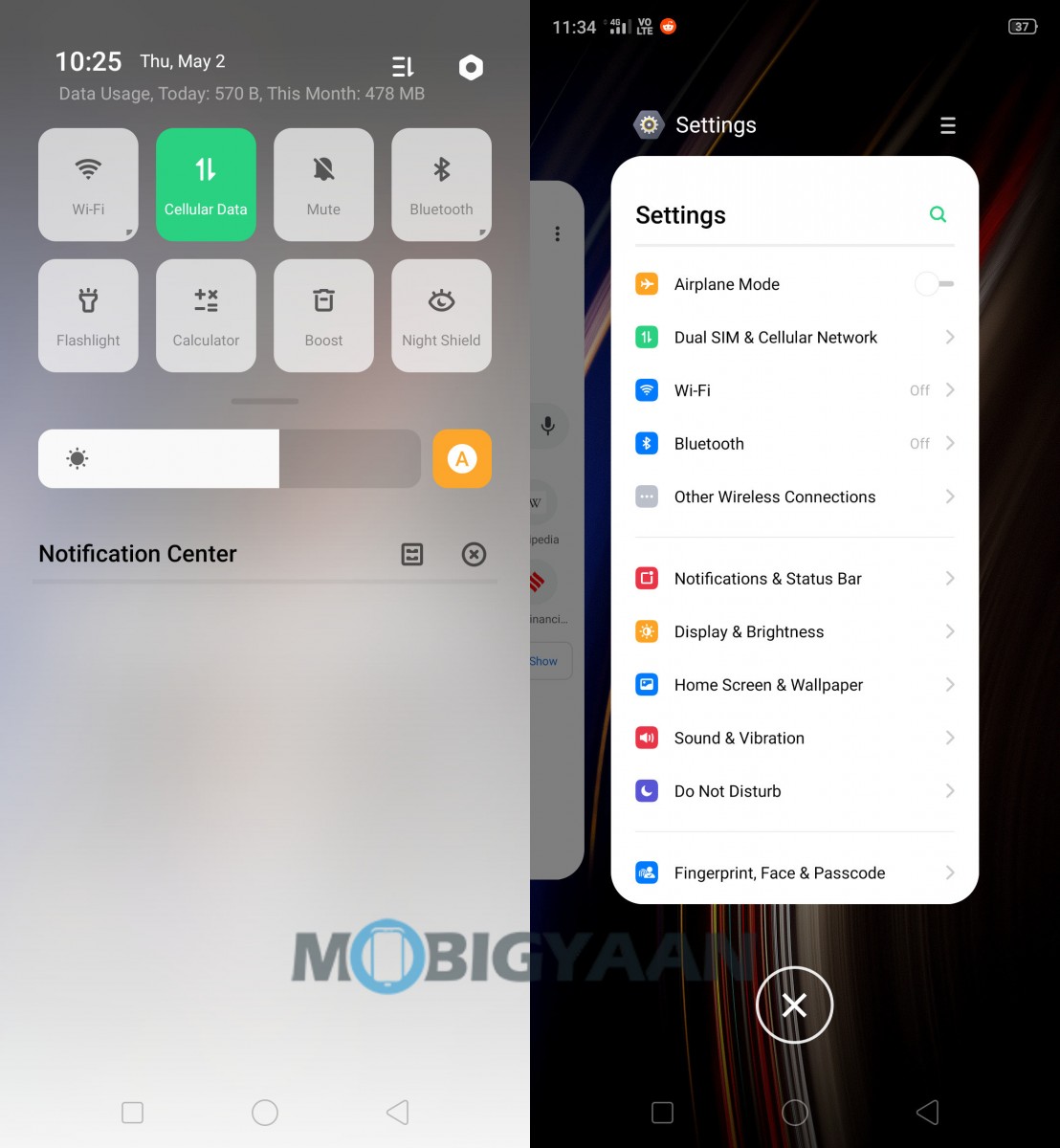
The smartphone also comes with a feature called Game Space which optimizes the hardware resources for better gaming performance. It locks the brightness, allows users to use their Wi-Fi and 4G connections together to reduce latency, and hide unimportant notifications during the gameplay.
I encountered a few instances of app crash initially but it’s our review unit was running a pre-release software out-of-the-box. This is why our device didn’t support Widevine L1 as well as 960fps video recording. But the company said that the retail version will support both these features out of the box.
Camera
The Reame 3 Pro comes with a 16 MP primary camera sensor on the back and a 5 MP secondary sensor for depth sensing. Interestinyl, it uses the Sony IMX 519 sensor — the same camera sensor as the OnePlus 6T.
The camera interface is simple and quite easy to use. You swipe left and right on the screen to switch between different modes. Also, there are toggles for HDR, Flash, filters and more. Also, Realme has integrated Google Len into the camera interface itself.
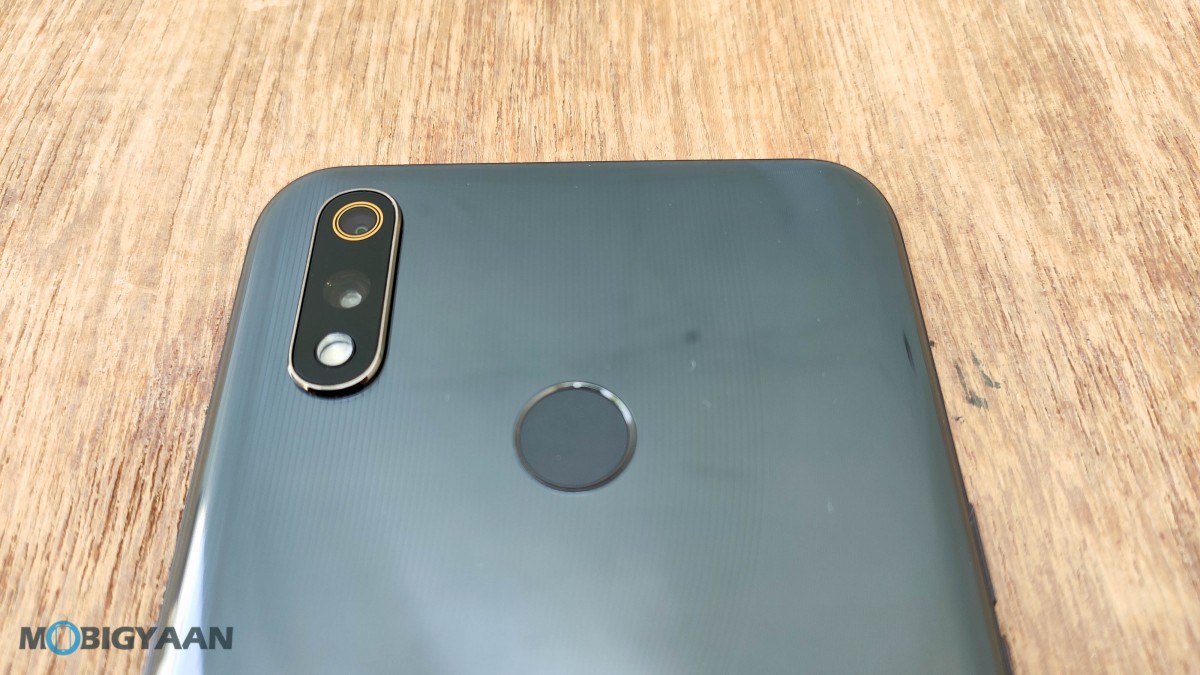
It comes with a Chroma Boost feature that relies on AI to boost colors and dynamic range in shots. While the images captured with this mode seems oversaturated, they look great for social media platforms.
The company has also offered a dedicated night mode called Nightscape. It boosts exposure in low-light conditions which should lead to better shots. However, images captured using this mode are nowhere near the acceptable “night mode” shots.
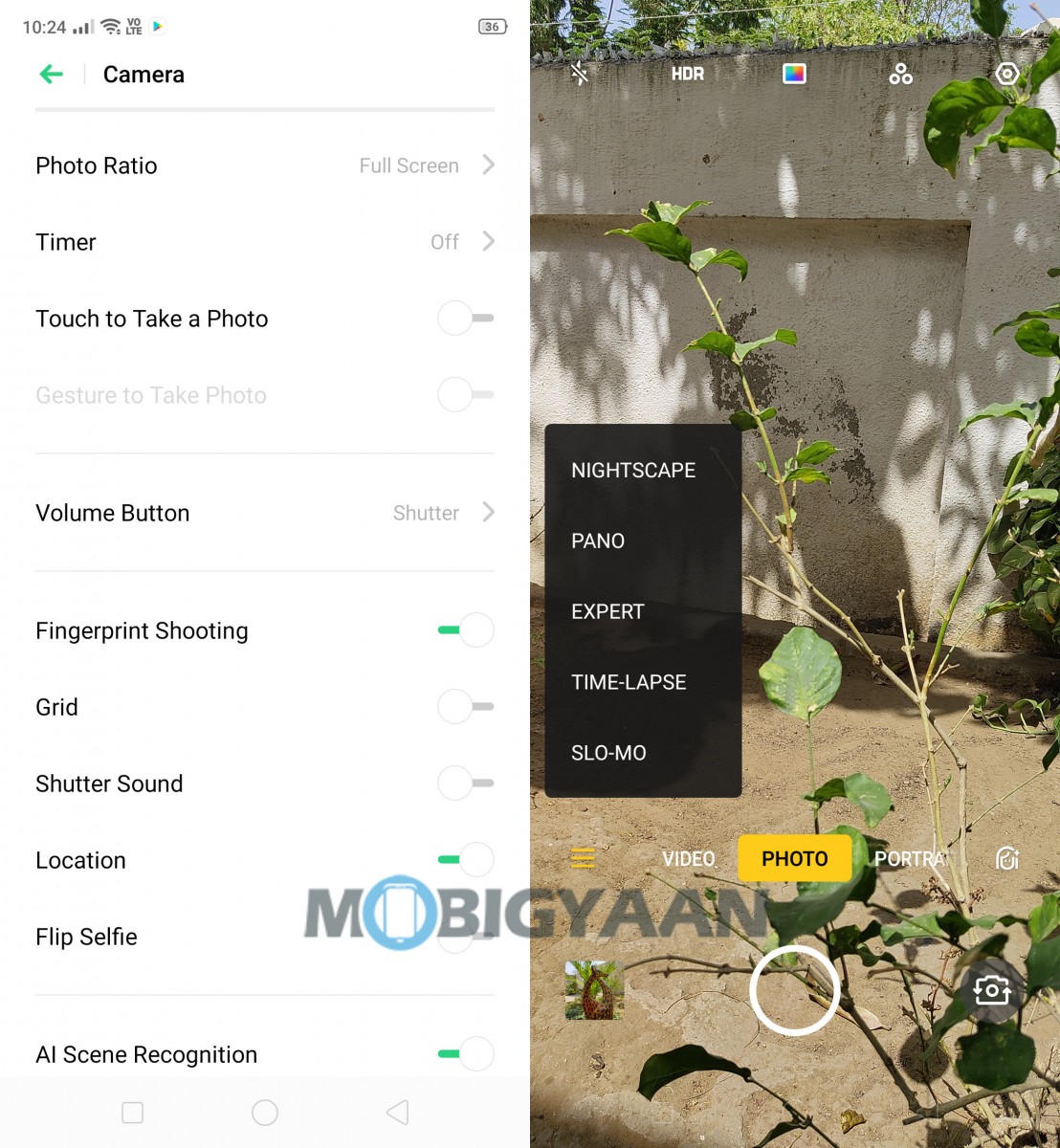
It offers different shooting modes such as panorama, manual, and slow-motion. The smartphone also supports 960fps super slow-mo video recording but as said earlier, our review unit didn’t support this feature at the time of reviewing this phone.
After the smartphone received an update, the overall camera experience has improved. The background separation in the bokeh effect is now well defined and the edges are also softer. While the images captured during the daylight are decent, the company has a lot of ground to cover if it wants to compete against the Redmi Note 7 Pro.
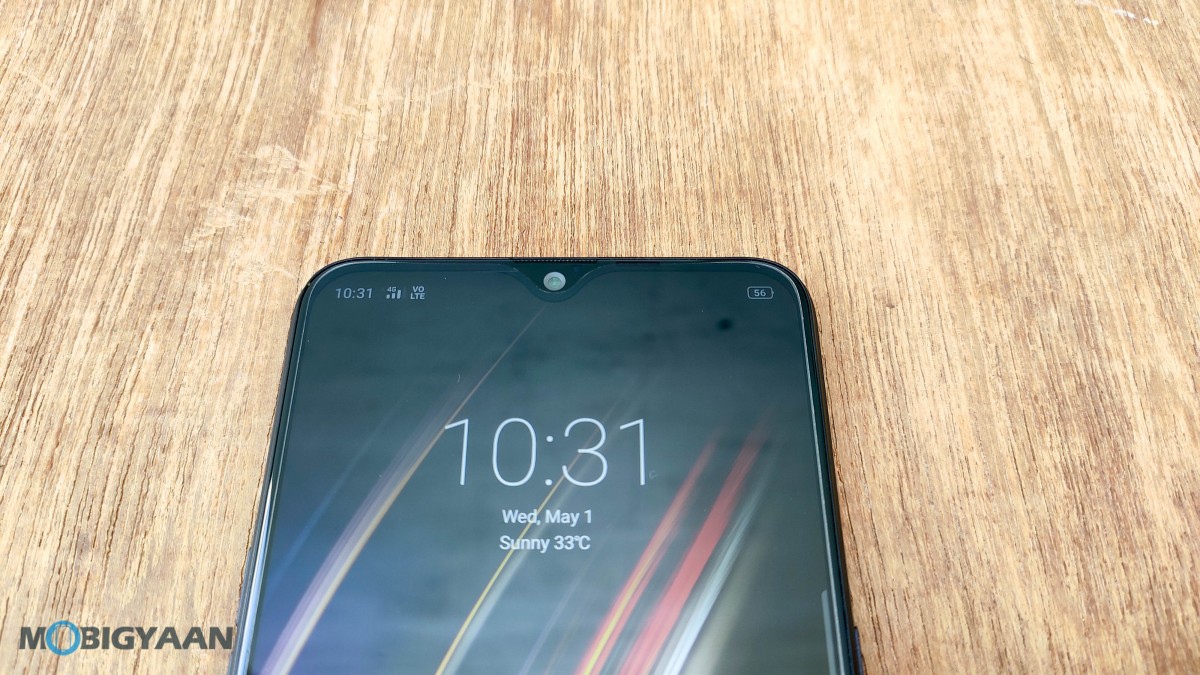
On the front side, the Realme 3 Pro comes with a 25 MP snapper. It is quite good and captures sharp and detailed images. The focus is better and the dynamic range is also good. If you are a selfie lover, you’ll be impressed by the front-facing camera performance.
Realme 3 Pro Camera Samples
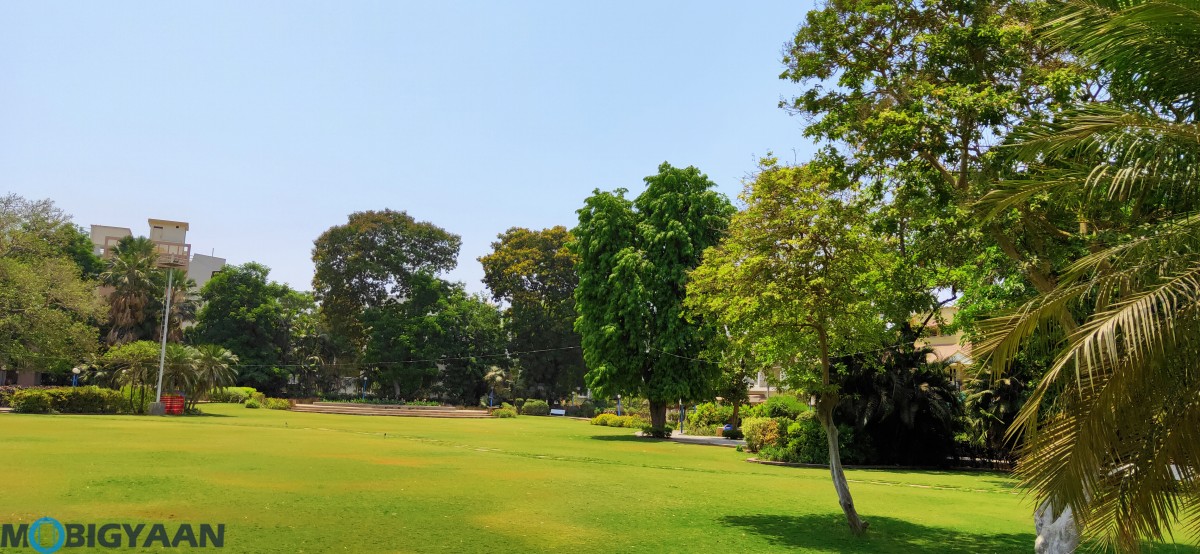

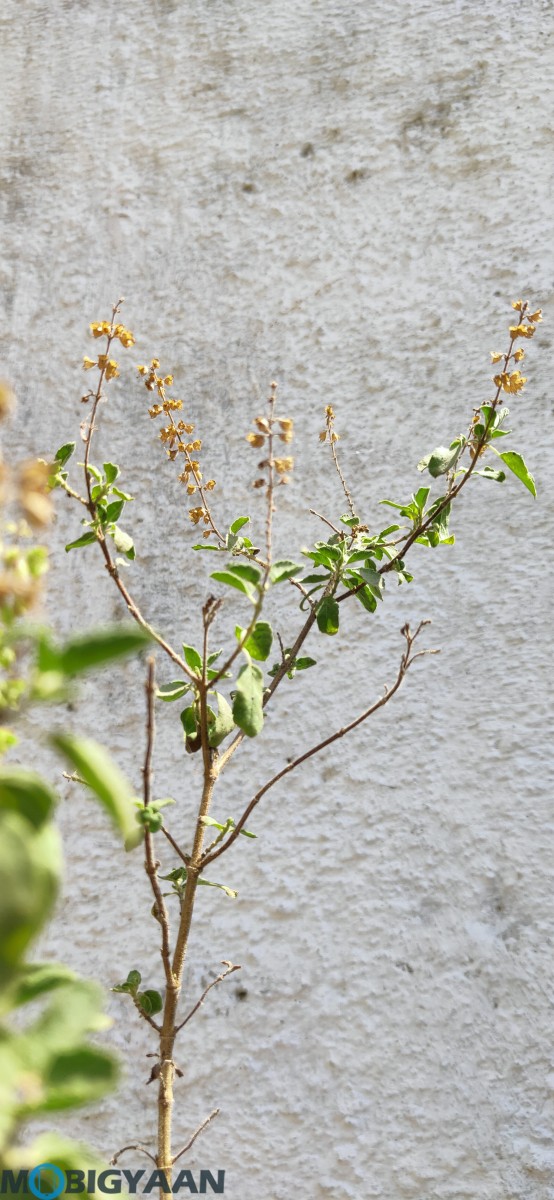
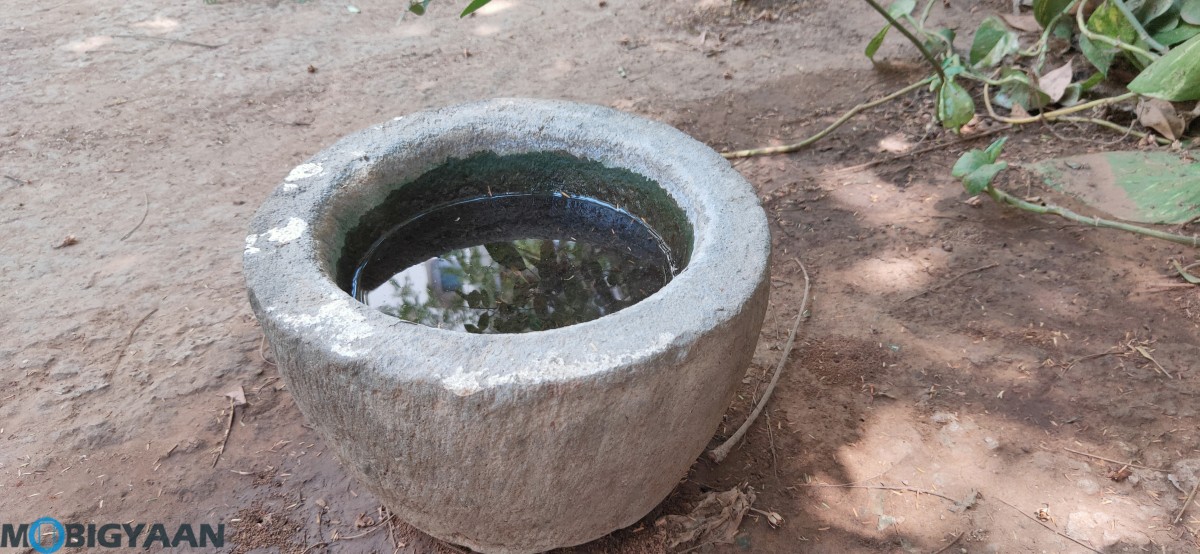
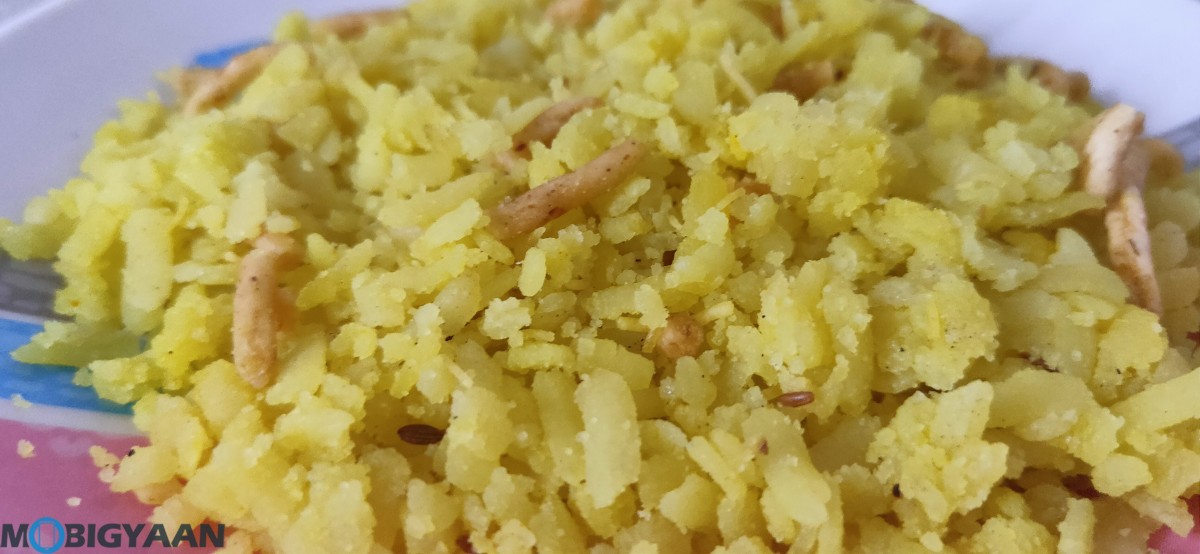

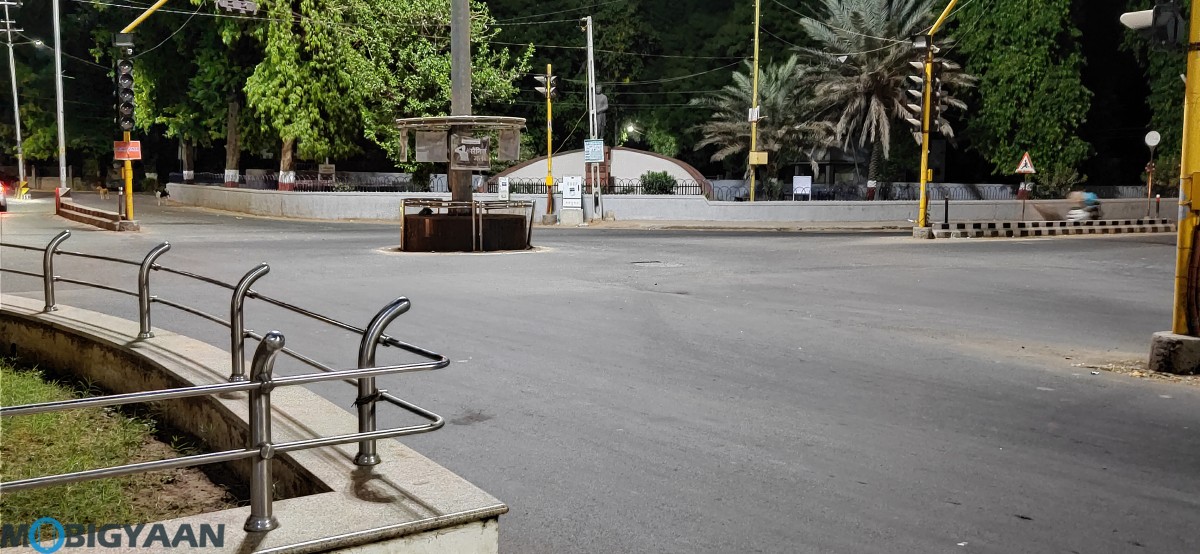
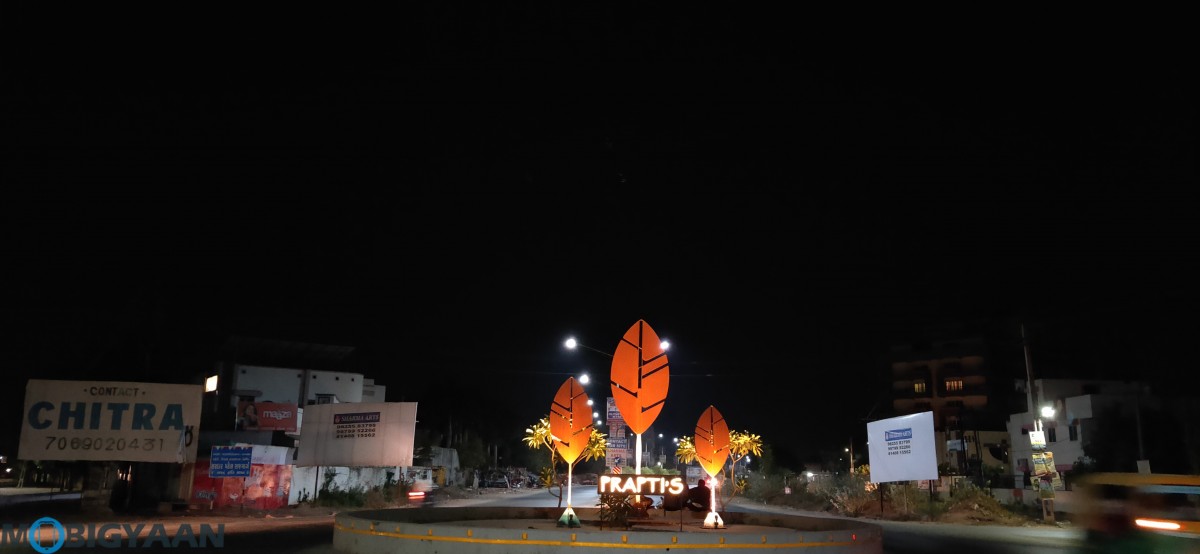
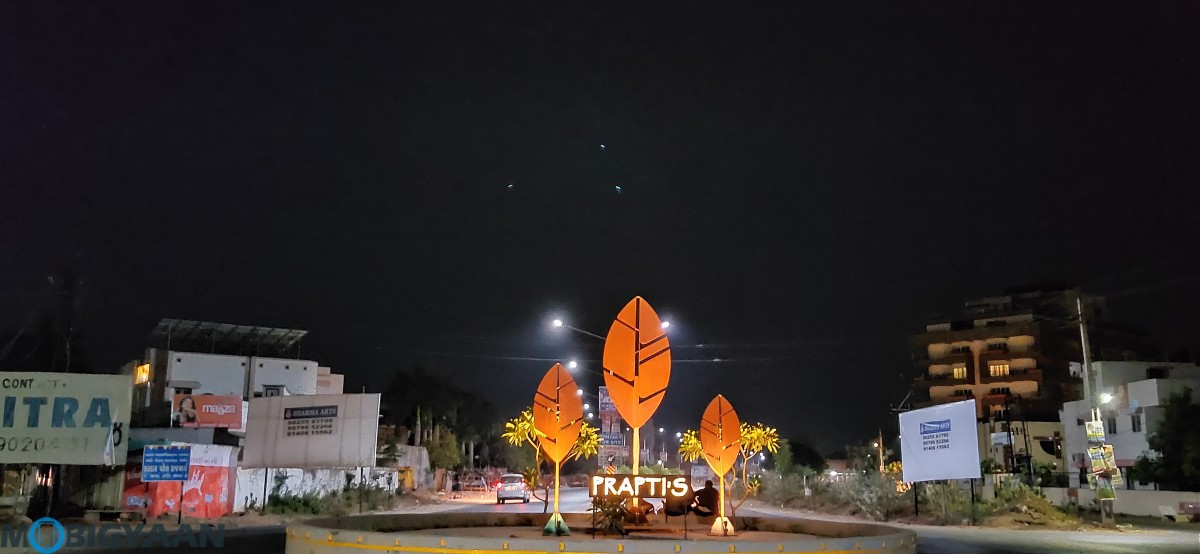
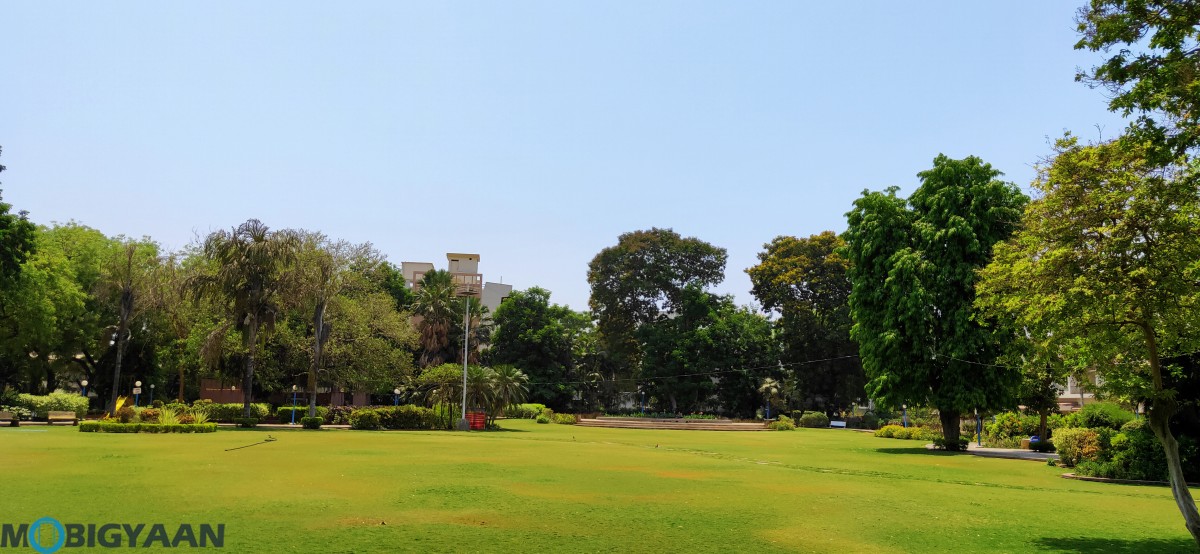



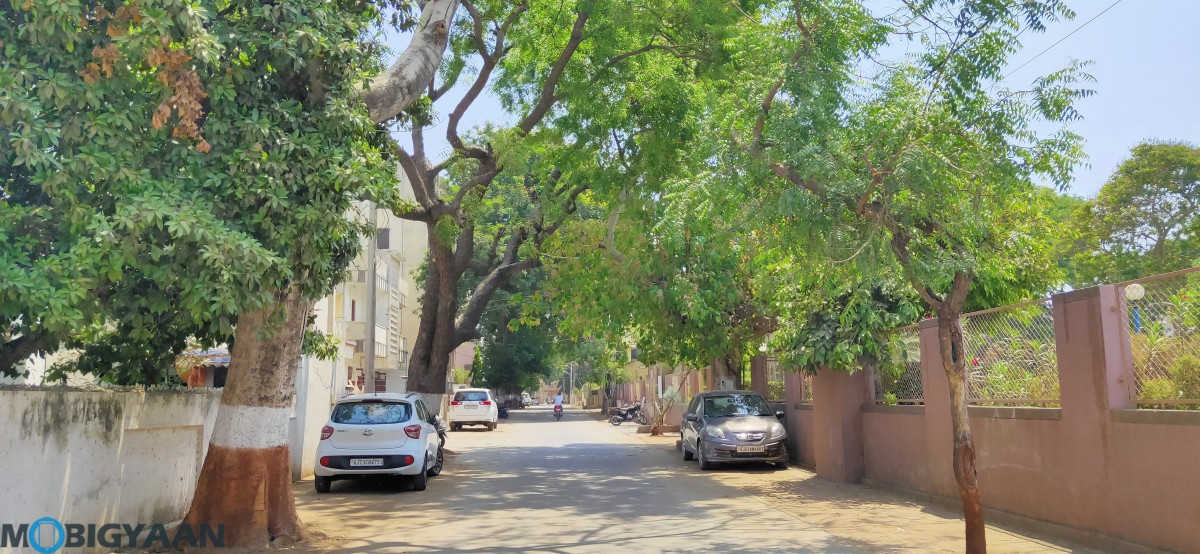


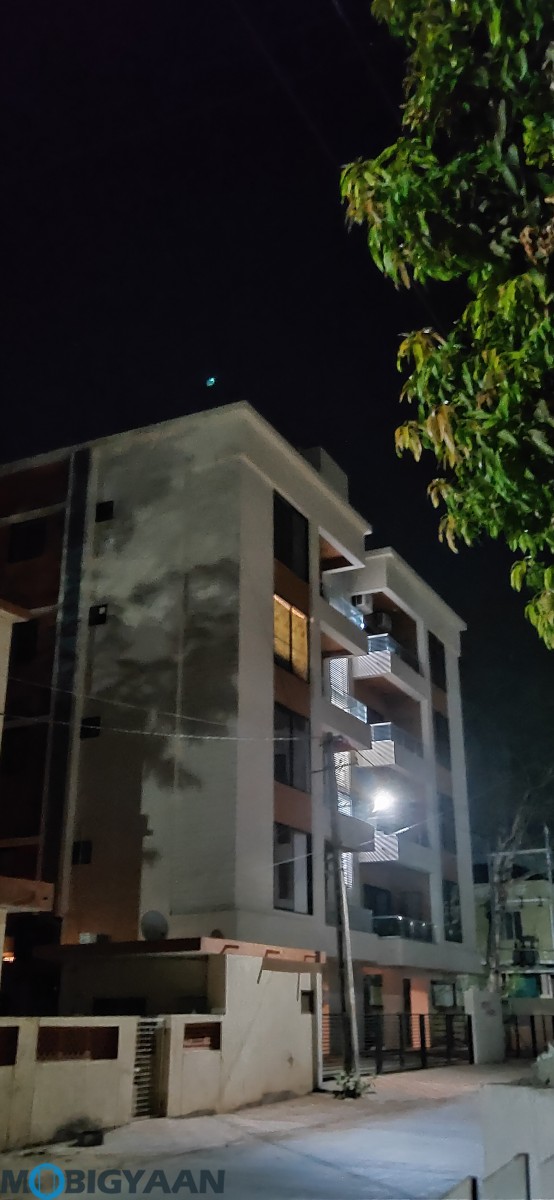
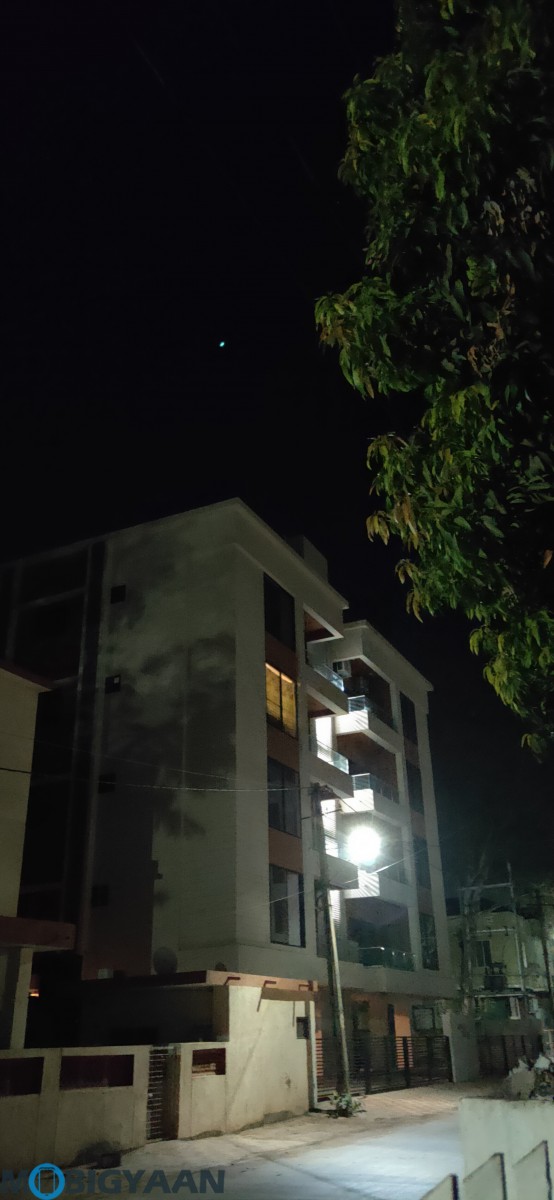

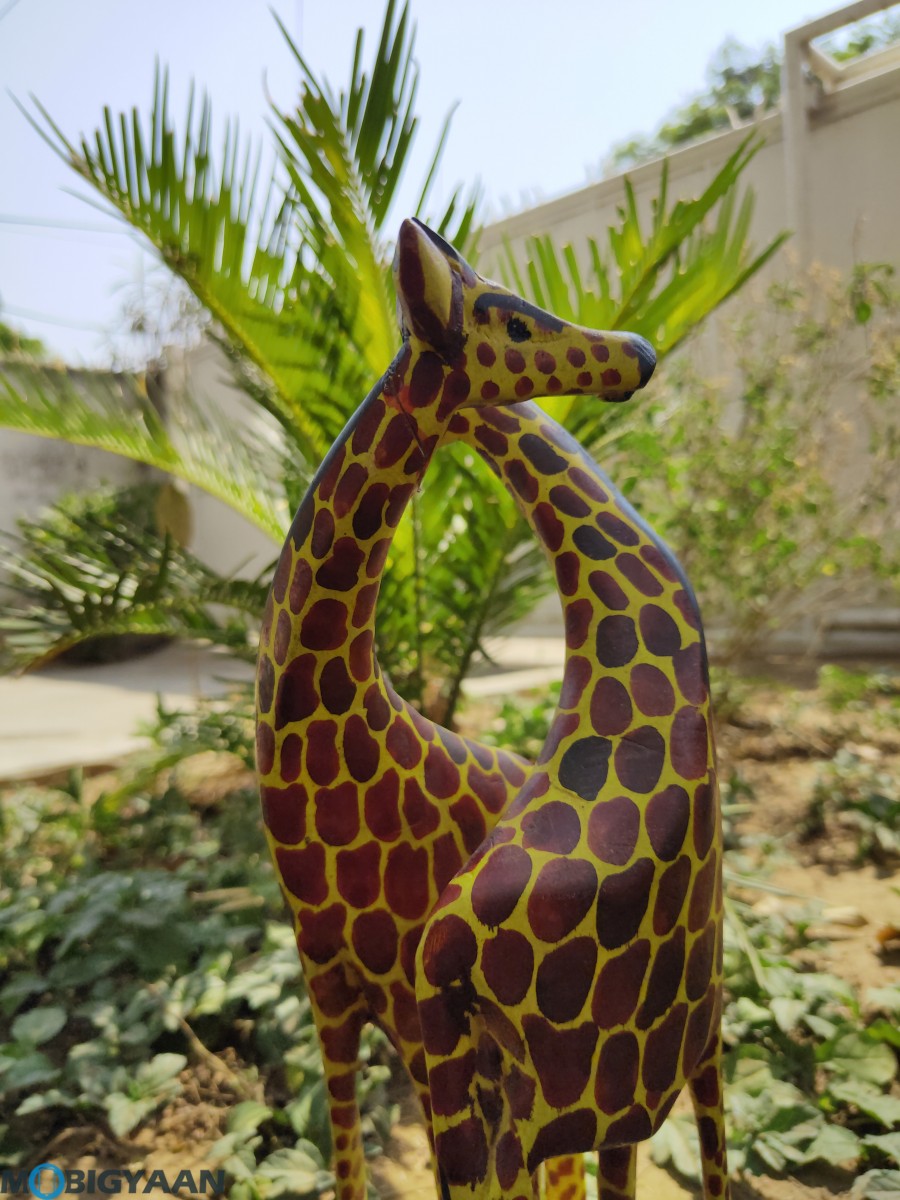
Battery & Others
The Realme 3 Pro comes powered by a 4045 mAh battery. It easily lasts through more than a day of average or regular usage. Playing PUBG on the smartphone for a little over two hours drained the phone’s battery around 56 percent.
In case you are running out of power, there’s a Super High Power Efficiency mode that you give you extra mileage during critical times. For the first time, Realme has offered fast charging support on its smartphone. The smartphone comes with VOOC 3.0 fast charging support. The company is also including a 20W fast charger in the box.
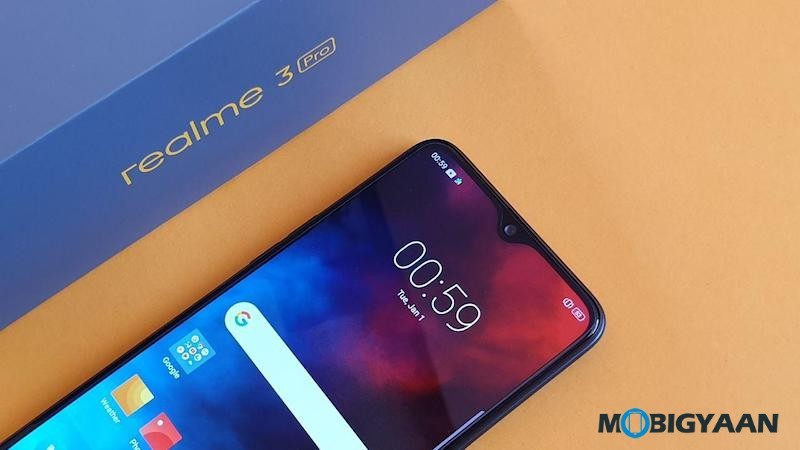
As for the connectivity, both SIM slots on the smartphone support 4G VoLTE so your Jio SIM will work along with any other telecom operator’s 4G data connection. Coming to the audio, the call quality was good and the audio was also clear on both the sides.
Verdict
The Realme 3 Pro offers good design, a decent display, awesome battery life, and great performance. It’s the software and camera that could have been better but this doesn’t mean that they are bad. At this price point, this is one of the best smartphone in the market.
If you are wondering whether to go for the Redmi Note 7 Pro or the Realme 3 Pro, then I’ll say both are pretty much same. However, if you are more into photography, go with the Redmi Note 7 Pro and for a slightly better performance and faster charging, go with the Realme 3 Pro.
Strength
- Good design, feels good to hold
- Performance is quite impressive
- 20W fast charging
- Battery life is also good
Weakness
- Low-light photography
- Micro USB port
- Software isn’t well optimized (Note: our review unit came with pre-release software)

